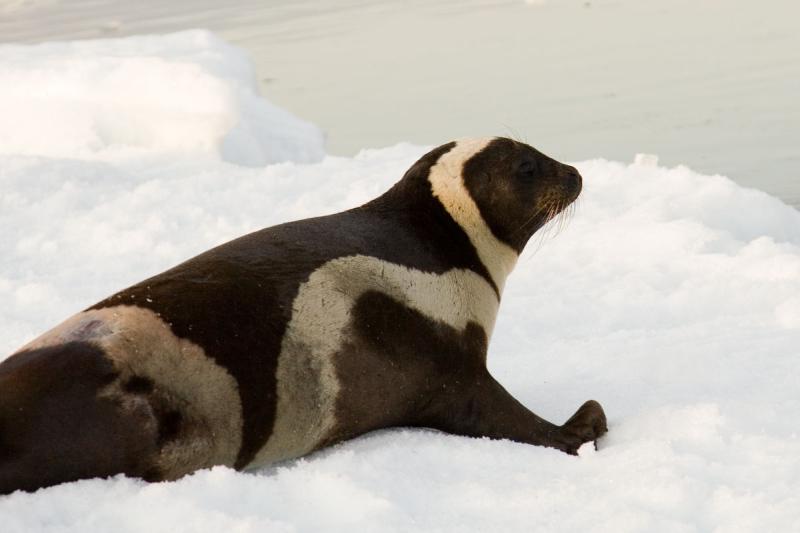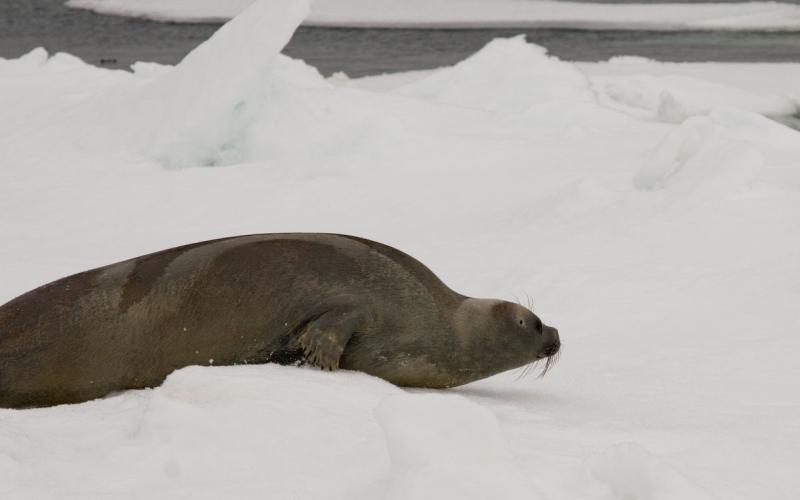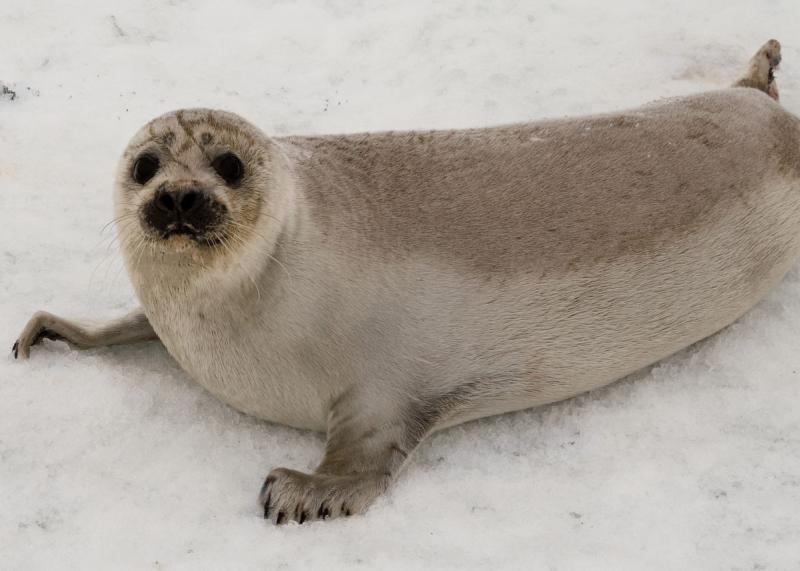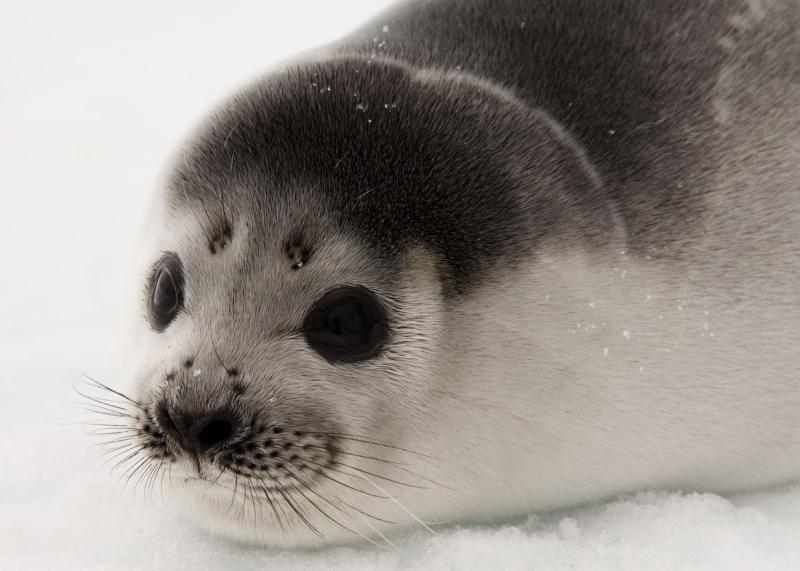Wildlife North America . com North American Animals - mamals, birds, reptiles, insects |
Ribbon Seal (Phoca fasciata)
Adult male Ribbon Seal with distinct ribbon patterns. Bering Sea ice. Photograph by Josh M London, National Marine Mammal Laboratory, NOAA. Some rights reserved. (view image details) 
Adult female Ribbon Seal. Bering Sea ice. Photograph by Josh M London, National Marine Mammal Laboratory, NOAA. Some rights reserved. (view image details) 
This is a yearling (over a year old) Ribbon Seal. He is in the beginning stages of his molt. Every year, seals will replace their coat with all new fur. Photograph by Josh M London, National Marine Mammal Laboratory, NOAA. Some rights reserved. (view image details) 
Young Ribbon Seals are so cute. Bering Sea ice. Photograph by Josh M London, National Marine Mammal Laboratory, NOAA. Some rights reserved. (view image details)
RIBBON SEAL FACTS
DescriptionThe Ribbon Seal lives in the arctic parts of the Pacific Ocean, including pack ice off the coast of Alaska. It has dark fur with contrasting white or yellowish bands on the neck, flippers, and body. Males are darker than females. Newborn pups are white, and juveniles do not have the striped pattern. Other Names Banded Seal Size length 1.6 - 1.7m Environment Rarely seen on land. They molt and breed on offshore pack ice (about 100-200km offshore) in late winter and spring. Food fish such as pollock, cod, capelin. Also squid, octopus, and shrimp Breeding Ribbon Seals give birth to one pup with the birthing occurring on ice flows. The pup is weaned after a month by which time it has doubled its weight. Range cold waters of the northern Pacific. Classification
Relatives in same Genus Harp Seal (P. groenlandica) Ringed Seal (P. hispida) Spotted Seal (P. largha) Harbor Seal (P. vitulina) Home | Mammals | Reptiles | Birds | Insects | Privacy Policy | Disclaimer | Contact Us |